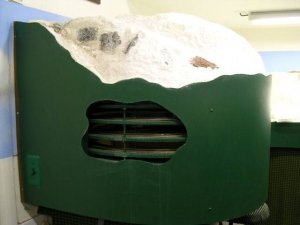Helix Hoss
Hoss,
The first thing to consider is, what type of rolling stock, motive power and lenght/weight of trains you will be running. You need to remember that basically, a 1% grade robs you of at least 25% of your pulling power, plus you are negociating curves which robs you of even more pulling power. You should also decide how high you need to go, etc. A helix is great if you have the room, however, I prefer to see long runs up the mountains, etc. I am not a helix fan as I believe they take up more room than necessary. However, that is my oppinion. A 22 in radius is not bad in N scale and I would suggest no more than a 1.5% grade which would be a 1.80 inch rise with in a 120 inch lenght.
This would be a 44 inch diameter circle which is approximately 100 inches of track (figure your guzintus-the Jethro Bodine method). Now take into consideration you need subsupport for the track, clearance between the levels of helix, etc. your grade becomes steeper. For N scale, I wouldn't think more than 1/4 inch plywood would be necessary unless you plan on taking a hike someday. Like Mike mentioned in the previous Thread, use Ready Rod, etc. to link the levels together. This way the levels are not permanent and can be adjusted.
We all remember the cartoon Helix the Cat? LOL
Hope this helps you out.
Marc



